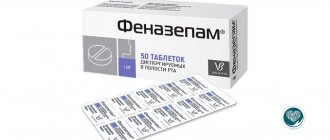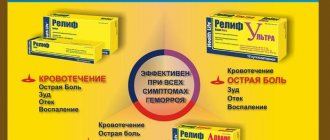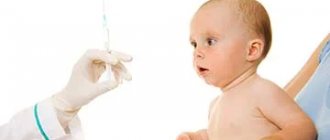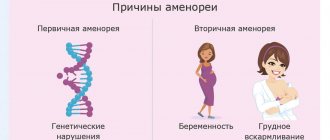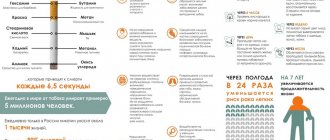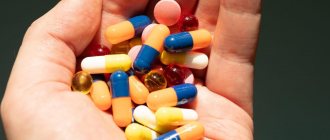General information
Codeine is the second most important alkaloid of opium, the milky juice of the poppy. The chemical structure of codeine is very close to morphine, differing only in the presence of a methyl group at the hydroxyl ion in the 3rd position of the benzene ring. Therefore, codeine is always compared with morphine: in terms of therapeutic and narcotic activity, degree of danger, likelihood of addiction - in all these parameters codeine is inferior. However, this does not indicate the absolute safety of the drug, as was commonly believed in the middle of the last century.
Effect
It is useful to know that codeine has not only a therapeutic effect but also a narcotic effect. When using the drug, opiate receptors in the brain are excited, resulting in stimulation of the analgesic system.
The effect of the substance is due to the fact that when the drug enters the body, 10% of the drug is transformed into morphine. This leads to the shutdown of brain receptors, which improves mood.
Tablet pharmaceuticals, the main active ingredient of which is codeine, have an analgesic effect. Long-term use of codeine drugs can lead to addiction, as the substance has a psychoactive effect.
After taking the medication the following is observed:
- Improved mood
- Euphoria
- Feeling of lightness
The effect occurs almost immediately after administration of the medication.
When taking an increased dose of the medicine, the patient feels indifference to the outside world and feels a pleasant warmth in the body. In this case, the addict may lose consciousness for several minutes. However, two hours after intoxication, the mood quickly changes. The addict becomes irritable and nervous; taking the next dose of the drug will ensure an improvement in well-being. Each time, in order to get pleasant sensations, the patient takes a larger dosage of the medication.
Constant use of the substance provokes the development of personality degradation. The patient ceases to be interested in previous hobbies, work, and friends.
Composition of the drug
At first, codeine was obtained directly from opium. However, the method of harvesting it by hand cutting the green fruit is not only too labor-intensive, but also involves partial illegal use of opium or poppy straw, which is difficult to control.
Scientists set out to chemically synthesize codeine. As a result, a method for methylating morphine was developed, and a method for producing codeine from organic compounds contained in coal tar was also invented. Codeine is used in the form of a free base or phosphoric acid salt in modern medicine as an antitussive and analgesic.
Currently, several drugs containing codeine are registered in the State Register of Medicines of the Russian Federation:
- Omnopon is a solution for subcutaneous use, used to relieve severe pain, mainly during surgical interventions. In addition to codeine, it contains morphine, thebaine, noscapine and papaverine, that is, the main alkaloids of the poppy hypnotic.
- Sedalgin-Neo, Sedal-M, Santoperalgin contain codeine, metamizole, paracetamol, caffeine and phenobarbital. Used in the form of painkillers.
- Nurofen Plus - ibuprofen with codeine, Pentanov-N - consists of codeine, metamizole, naproxen, caffeine and phenobarbital, as well as Codeine + Paracetamol tablets. All these drugs are classified as painkillers, anti-inflammatory and antipyretic drugs.
- Terpincode - cough tablets containing codeine in combination with terpinhydrate and sodium bicarbonate.
These medications are subject to strict subject-quantitative registration in pharmacies and medical organizations, which virtually eliminates the widespread abuse of codeine.
Coding
Coding involves getting rid of addiction in 1 appointment with a doctor or person who conducts the session. In practice, efficient coding does not exist. Evidence-based medicine does not provide examples of successful coding that would help the patient.
All coding features involve intimidation of patients or psychological pressure. Such methods may not be effective for everyone, mainly, in rare cases, for alcoholics and smokers. This doesn't help with drugs.
Effect on the body
The mechanism of action of codeine is based on the stimulation of opiate receptors located in the central nervous system and in peripheral organs, as well as inhibition of the cough center. In the intestines, where there are also opiate receptors, smooth muscle tone and peristalsis decrease. The sphincters, on the contrary, spasm. As a result, codeine has an analgesic and antitussive effect. Since the analgesia from codeine is less pronounced, it is used mainly for dry cough. Due to spasm of the sphincters, codeine is also effective for diarrhea.
When are codeine syrups prescribed?
Medicines of the codeine group are used for the following pathologies:
- Throat diseases that cause debilitating coughing attacks: laryngitis, pharyngitis, tonsillitis;
- Pneumonia;
- Bronchitis;
- Whooping cough.
Syrups affect the centers of the brain responsible for cough impulses. At night, the cough becomes especially intense and causes insomnia. Codeine helps control severe cough impulses.
Despite this, syrups of these groups are prescribed in extreme cases, since the content of the narcotic drug requires strict adherence to the dosage.
Signs of a drug addict
A patient with codeine addiction is practically no different from someone who uses other opiates: the same constricted pupils, dry mucous membranes, redness of the face, tachycardia, irritability, mood swings. Only the codeine user is distinguished by increased sociability, talkativeness, and a desire for active activity, while most opiate addicts are drowsy and inhibited. A codeine addict sleeps and eats little because the need disappears, and also suffers from constant constipation.
The longer a drug addict takes codeine, the more withdrawn, weak and embittered he becomes. A person may suspect that they are abusing codeine if they have a large number of painkillers containing codeine in their home.
Danger of consumption methods
Codeine is usually taken orally in the form of combined tablets containing, as a rule, 8-10 mg of codeine, as well as 300 mg of paracetamol and analgin, 50 mg of caffeine and 10 mg of phenobarbital. This combination is optimal for relieving severe pain of various origins.
A person suffering from codeine addiction consumes at least five times the amount of codeine, and then the doses become larger and larger. At the same time, chronic poisoning of the body occurs with excessive doses of analgesics, the psychostimulant caffeine, the hypnotic phenobarbital and other drugs included in complex preparations. This leads to disruption of the blood picture, dysfunction of the gastrointestinal tract, cardiovascular system and psychophysiological problems.
Conclusion
Codeine is an opioid analgesic with psychostimulant properties. Serves as a starting material for the synthesis of other opioid analgesics with a more pronounced narcotic effect. Abuse of codeine-containing drugs causes a persistent psychophysiological craving, which leads to polydrug addiction, overdose, and secondary infection, which inevitably leads to death. To save the life of a drug addict, it is necessary to promptly recognize the signs of drug addiction, undergo examination and begin treatment. Complex therapy using medications, the help of psychologists, psychotherapists allows you to cope with addiction, minimizing the likelihood of relapse.
Drug overdose
A codeine overdose can occur when 200-300 mg of the substance is consumed. Half an hour after oral use, respiratory depression, neuropsychic overexcitation occurs, turning into drowsiness and lethargy, body temperature decreases, the pupils narrow, headaches, tinnitus, nausea and a burning sensation in the stomach are felt. Further, a deep coma may develop, in which all reflexes are absent.
First aid
If you suspect codeine poisoning, you should definitely call an ambulance. While waiting for doctors, you should try to bring the patient to consciousness, take him out into the fresh air, unfasten all buttons and locks, and, if necessary, perform artificial respiration. Lay the patient on his side and prevent the tongue from falling back.
If poisoning is caused by tablets, then, if possible, you should rinse the stomach, inducing vomiting after taking a large amount of liquid.
Health care
First of all, measures are taken to eliminate hypoxia, which necessarily occurs due to respiratory depression.
The airways are first cleared using bronchoscopy, then artificial ventilation is performed using special equipment. Hyperbaric oxygenation - saturation with oxygen under high pressure - is carried out in a pressure chamber.
Then antidote therapy is carried out - naloxone is administered as an opioid receptor antagonist.
Next, neurometabolic therapy is carried out:
- Combined antihypoxants – cytoflavin and reamberin intravenous drip.
- Cholinergic drugs - gliatilin slowly intravenously.
- Vasoactive drugs - in case of insufficient blood circulation - Cavinton intravenously.
- In case of an oral source of poisoning, gastric lavage, gastroenterosorption or intestinal lavage are performed.
Symptomatic therapy is carried out depending on the presence of certain symptoms and their severity:
- Intravenous infusions of sodium bicarbonate solution and combined saline solutions.
- Colloidal solutions for the prevention of cerebral and pulmonary edema.
- Osmotic diuretics.
- Plasma replacement liquids.
- Antibacterial drugs.
- Glucocorticosteroids.
- Enteral and parenteral nutrition products.
Consequences of lack of help
In the absence of timely medical care, a deep coma will develop with the disappearance of all reflexes. Respiratory paralysis will lead to death.
Lethal dose
A dose of 500-800 mg is considered lethal, which is approximately 60-100 tablets containing codeine. Although at the peak of codeine addiction, addicts can use more.
Historical facts
Since the 19th century, codeine has been used as a cough tincture. In Russia, one of the first codeine-based remedies was Bekhterev's mixture. It relieved cough well, but was addictive. At that time little attention was paid to this.
Since the second half of the 20th century, codeine began to be used in cough syrups. The medicine really helped in the fight against cough, but had a large number of side effects. This forced insurance companies to conduct additional studies, during which it was determined that such drugs should not be given to children under 12 and pregnant women.
In the late 1970s, cough syrups gained popularity as cocktails. Their signature purple color became the basis for creating a new movement in hip-hop music. In the 1990s, rappers constantly starred in videos with white cups containing purple cocktails. These cocktails were based on the same cough mixtures with codeine.
Codeine was addictive and had a toxic effect on internal organs, which is why people who became dependent on such a drink died at a young age of up to 30 years.
In addition to using cocktails with cough syrup, drug addicts have appeared who use a large number of drugs in tablet and liquid form. Later, based on these drugs, they began to “cook” the drug “krokodil”, which is based on codeine. This drug has many side effects. Causes inflammation and decomposition of blood vessels and skin.
Given the demand for codeine drugs among drug addicts and the risk from home-made drugs, sanctions on codeine drugs were introduced. In Russia, the free sale of drugs containing codeine is prohibited. Violating the law can result in imprisonment for up to 12 years.
Withdrawal
Withdrawal syndrome from codeineism occurs approximately 4-5 months after the start of regular drug abuse.
Its main symptoms are similar to withdrawal symptoms due to morphinism:
- runny nose, frequent sneezing and watery eyes;
- increased salivation;
- dilated pupils;
- sleep and appetite disturbances;
- an irresistible desire to use codeine;
- changes in body temperature - chills and fever, goosebumps;
- discomfort caused by muscle tension throughout the body;
- joint and muscle pain;
- dyspeptic disorders in the form of severe pain in the intestines, diarrhea, vomiting.
With codeineism, the symptoms are less pronounced, intestinal disorders predominate. Withdrawal syndrome lasts longer - up to three to four weeks. As codeine addiction progresses, the withdrawal syndrome changes – striking symptoms such as runny nose, watery eyes, and muscle pain disappear. Instead, hypotension, depression, and severe weakness appear. The patient is characterized by hostility towards others and anger towards the whole world. Mood improves only with the use of new doses of codeine, which over time greatly increase and reach lethal levels.
Literature:
- Mashkovsky M.D. Medicines: In 2 volumes. T.1. — 14th ed., revised, corrected. and additional - M.: "New Wave Publishing House", 2000. - 540 p.
- Kharkevich D.A. Pharmacology: Textbook. — 6th ed., revised. and additional - M.: GEOTAR MEDICINE, 1999. - 664 p.
- Ponomareva I.P. Pain management (selected questions in tables and algorithms): textbook. Ministry of Education and Science of the Russian Federation, Federal State Autonomous Educational Institution of Higher Education "Belgorod State National Research University". - Belgorod: Belgorod National Research University "BelSU", 2021. - 50 p.: table.
- Workbook on pharmacology: workshop. Part 4. Pokrovsky M.V., Danilenko L.M. Ministry of Education and Science of the Russian Federation, Federal State Autonomous Educational Institution of Higher Education "Belgorod State National Research University". - Belgorod: National Research University "BelSU", 2021. - 70 p.
Removal from the body and testing methods in various facilities
Codeine is metabolized to form codeine glucuronide, norcodeine, morphine, morphine glucuronide and normorphine. About 10-15% is excreted unchanged, the rest are metabolites.
Determination in blood
Codeine can be detected in the blood at the time of drug intoxication and in the following days. Blood is not typically used for testing for codeine due to its short half-life and the high cost of reagents and equipment.
Determination in urine
Urine is most often used to test for opiates, including codeine. This is not accidental: no special conditions are required for collecting samples, it is possible to take a large volume, the concentration of metabolites is usually the highest in comparison with other biological objects.
On the first day, both codeine and norcodeine can be detected in the urine; on the second day, norcodeine is no longer detectable, codeine becomes much less. After three days, only traces of morphine can be found in the urine, just like after using it or heroin. Therefore, codeine use can only be confirmed in the first 48 hours. Then, up to 4 days, the fact of using any opiate can be detected.
Qualitative and quantitative determination of codeine in urine is carried out only in a clinical laboratory using liquid and gas chromatography with various detectors.
Codeine cannot be found at home. But if abuse is suspected, the opiate strip test will give a positive result:
- "NARCOSCREEN", China.
- "NARCOCHECK", Canada.
- "OPI-Strip-DAC" and "OPI-Cart-DAC", Russia.
- "RED", Russia.
- "Test system NARCOLAB", China.
Determination in saliva
Saliva is a very convenient object for analysis; due to the ease of sample collection, traces can be found in a concentration of at least 40 ng/ml, but not more than after 24 hours.
You can independently test your saliva, also only for opiates, using the NARCOSCREEN test.
Definition in hair
Hair is rarely taken for examination, since there are difficulties in processing the sample, and the analysis itself is quite expensive. However, hair can tell a lot. If you don’t cut them for a year, you can determine the time of use of almost any substance, including codeine, with an accuracy of a few days.
Detoxification in hospital
In clinical settings, detoxification is carried out in several ways:
- Infusion detoxification: First, a sodium bicarbonate solution is administered, which will reduce the pH to an alkaline reaction, in which metabolites more easily pass from tissues to the blood. Multicomponent salt solutions are introduced to maintain the acid-base balance. Colloidal solutions are given to prevent cerebral and pulmonary edema. Ozonated saline solution is administered to activate the body's own defenses.
- Forced diuresis, which consists of three stages: firstly, a water load in the form of two liters of saline intravenously, secondly, the administration of diuretics and thirdly, solutions of potassium and sodium salts, also intravenously.
- Detoxification with an antidote. For codeine, the antidote is naloxone.
Withdrawal syndrome
Withdrawal syndrome is a sign of an advanced disease (stage 2 of drug addiction). This severe psychosomatic condition occurs after 2-3 months of regular drug use.
Withdrawal syndrome develops one day after discontinuation of the drug, reaching a maximum on the third day.
Withdrawal symptoms include:
- psycho-emotional disorders - patients do not hide their strong craving for drugs, they are often aggressive, they are bothered by severe sleep disturbances or complete insomnia, emotional discomfort, panic attacks, irritability;
- autonomic symptoms – tachycardia, hypertension, chills, hyperhidrosis, lacrimation;
- pain syndrome – pain in muscles, joints, abdominal pain.
How to ease withdrawal symptoms
Treatment of patients with withdrawal syndrome is possible only in a hospital. To alleviate their condition:
- An antidote (nalorphine, naltrexone) is administered.
- A detoxification course is prescribed: drug detoxification;
- hardware detoxification;
- UBOD (ultra-rapid opioid detoxification).
How addiction is formed
Addiction to the use of codeine develops in approximately the same way as any other drug addiction.
- At the first stage, irregular, episodic use occurs. There are no changes in the body yet. And there are no symptoms of addiction.
- The second stage of addiction is characterized by the onset of the disease codeineism. The drug is being taken more and more often, while euphoria and the first symptoms of use (itching, redness of the skin) are felt less and less. Doses begin to increase. Mental dependence appears, the realization that psychological comfort will come only during drug intoxication. At the same time, the attraction to alcohol is replaced by disgust.
- After about six months, withdrawal symptoms begin to appear, in which dyspeptic disorders predominate. And over time, withdrawal syndrome is accompanied by too much weakness and depression. Long-time codeine addicts are usually withdrawn, exhausted and embittered.
Consequences of chronic drug addiction
Chronic intoxication triggers irreversible degenerative processes in the central nervous system and changes the course of physiological processes in the body.
Consequences:
- Encephalopathy;
- Acute heart failure;
- Acute respiratory failure;
- Toxic hepatitis;
- Acute renal failure;
- Trophic ulcers;
- Immunodeficiency.
The body of a chronic drug addict is exhausted, death occurs due to dysfunction of vital organs and systems.
Life expectancy of a drug addict
Codeine addicts live no more than 5–7 years with systematic use. But, as a rule, death occurs much earlier from secondary pathologies and infections.
Treatment and how to cure
Treatment for codeineism must be carried out in a psychiatric or specialized drug treatment clinic.
Therapy for any addiction is a complex, multi-stage, long-term individual process. First of all, it depends on the patient himself - his clear awareness of the presence of the disease and a strong desire to be cured. Therefore, it is important not only drug treatment, but also psychotherapeutic treatment. One without the other will not bring the desired result.
Drug therapy
Medicines used for drug therapy can be divided into three groups:
- Psychotropic drugs used in psychiatry and narcology - antidepressants (imipramine, clomipramine, trazodone), antipsychotics (clozapine, neurolepromazine, perphenazine), anticonvulsants (carbamazepine, lamictal).
- Specific medications used only in narcology are drugs that are antidotes or drug antagonists; in the case of codeine, these are naloxone and naltrexone.
- Systemic or somatic drugs that are prescribed in therapy and narcology - nootropics (piracetam, cavinton, aminalon), hepatotropes (ursosan, heptral, hepa-merz).
Psychotherapy
Psychotherapeutic treatment occurs in two directions: individual and group therapy. Each of the areas includes:
- Psychological adaptation – getting used to living in new conditions of sobriety.
- Psychological counseling – assistance in resolving problems and making decisions regarding all areas of a new life.
- Psychological correction is the formation of the necessary psychological qualities to maintain adaptation to new living conditions.
- Occupational therapy - developing the skill to work, increasing motivation for work, an adequate feeling of being a full-fledged member of society - significant, useful and valuable.
- Environmental therapy, art therapy, autogenic training, social rehabilitation work are other ways to restore the individual socially and psychophysiologically.
Outpatient or home treatment
Dependence on any psychoactive drug is treated only in a hospital under the supervision of specialists. If it were possible to recover at home, following the doctor's testimony, then drug addiction would not be such a common disease.
To send a patient home for treatment, you need to be confident in his firm decision to quit. But even the person himself cannot be sure of this. Once at home, the drug addict will begin to mechanically look for reasons and opportunities to use a new dose.
Enhanced poisoning therapy
7,500 pcs.
- Dropper volume 1500 ml
- Visit of a narcologist
- Patient examination
- Consultation with a narcologist
- Detoxification
- Doctor's orders
- Medicines for 3 days
- Monitoring the patient's condition
Order service
During therapy with codeine-containing drugs, the doctor constantly monitors the patient. If adverse reactions or signs of addiction develop, the specialist reduces the dosage or discontinues the drug. Self-administration of syrups, even in small doses, can lead to the development of severe pathologies, as well as drug addiction.
Rehabilitation
Rehabilitation is an important part of treatment, without which it will not be effective. This process consists of resocialization and psychotherapy of codependent relatives.
Resocialization
Restoring the individual mentally, physically, and socially is resocialization. Without returning the person to normal life, where nothing will remind him of addiction, treatment will not be effective. We must not forget about this and neglect this component of the rehabilitation process.
A continuation of resocialization is working with relatives and close people who surrounded the patient during his illness, who are commonly called codependents.
Working with codependents
Codependency is a feature of relationships between drug addicts and loved ones who do not use drugs themselves, but are constantly in close proximity. Sometimes codependents need psychotherapy no less than the patients themselves. Untreated relatives can greatly harm the treatment and rehabilitation process. All methods of psychotherapy used to treat drug addicts are used to work with codependents.
Resocialization
Resocialization is the last stage in rehabilitation. As soon as a person recovers from addiction, he needs to return to society. To do this, you need to help him recover, give a new assessment to his new self. It is important to restore faith in your capabilities and get rid of the mental cliché of an addict.
It is very difficult to do this on your own. You need to constantly communicate with other people or a psychologist. An excellent way to resocialize is to learn a new profession or master a new field of activity.
As soon as a person returns to society, the risk of relapse is reduced to a minimum. If this does not happen, it is necessary to undergo further rehabilitation, otherwise there will be no point in it.
Codeine analogues
Codeine is an opiate drug, an opium alkaloid. Other poppy alkaloids and their derivatives have a similar effect on the body. For example:
- Opium is the dried milky juice of the poppy. Contains morphine, codeine, noscapine, thebaine, papaverine. It is dangerous both as an independent drug and as a raw material for the production of heroin.
- Morphine is used both officially to relieve severe pain, nonproductive cough, and sleep disorders, and as an addictive drug. Addiction to morphine develops after 10-15 doses.
- Heroin is a morphine derivative that penetrates the brain faster. Prohibited for production and consumption. Dependence occurs after several doses.
- Desomorphine (“Krokodil”) is a morphine derivative, made from codeine-containing tablets. Almost addictive from the first injection.
- Fentanyl is a drug. Hundreds of times stronger than morphine, it causes death very quickly.
Of course, codeine's psychoactive and analgesic effect is less pronounced than that of the listed substances, but this is only a matter of frequency and quantity of use of the drug. In any case, regular use for recreational purposes is fraught with the same consequences.
Working with codependents
Codependent people are relatives, parents, husband or wife. Such people suffer first of all together with the dependent person. Therefore, they can be both the cause of a new breakdown and a reason to stop using.
Codependents must be able to recognize attempts at new use and know how to prevent them. It is believed that close people do not believe or do not see the problem until the last moment. The task is to teach them not only to see the problem of drug addiction in their loved ones, but to tell them how to overcome it.
